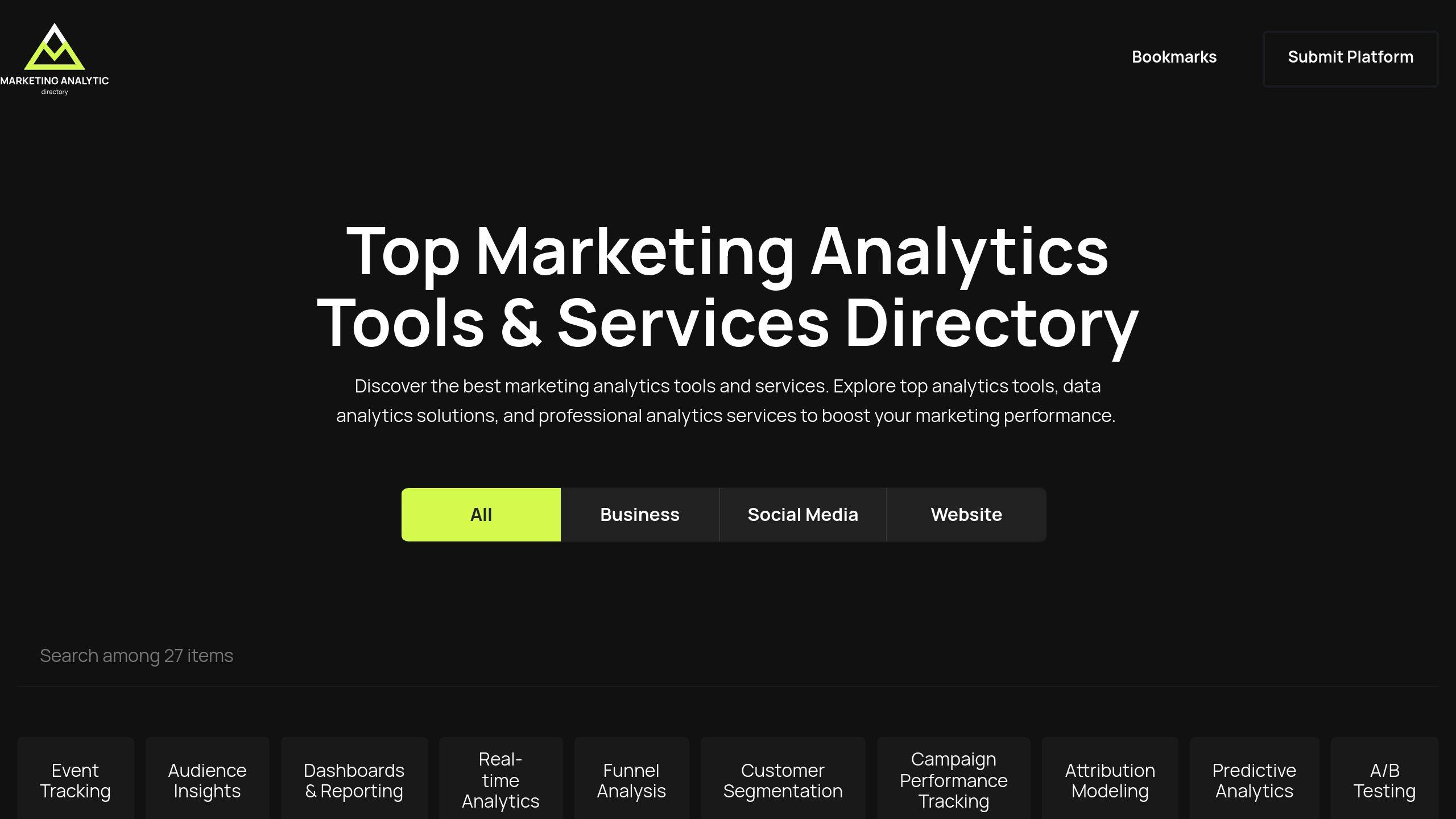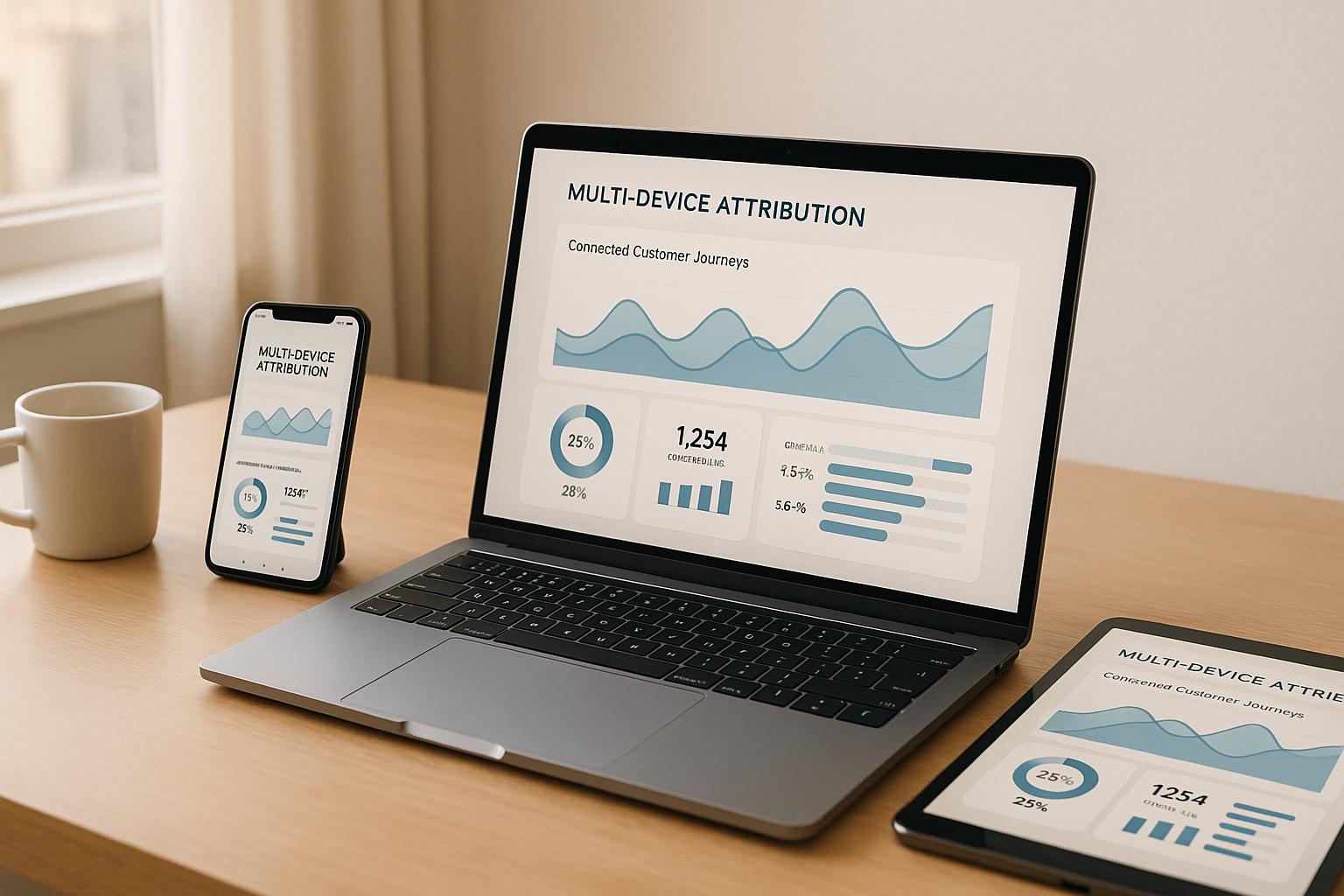Bias in marketing analytics can waste over 20% of marketing budgets and lead to poor decisions. To avoid this, you need to identify and minimize biases like selection bias, demographic bias, and measurement bias. Here's how:
- Selection Bias: Ensure your data represents your entire audience, not just a subset (e.g., social media users or email subscribers).
- Demographic Bias: Use diverse data sources to avoid overrepresenting or underrepresenting certain groups.
- Measurement Bias: Keep data collection methods consistent and up-to-date to avoid outdated or skewed results.
Steps to Reduce Bias:
- Audit data collection methods for diversity and accuracy.
- Use visualization tools to spot patterns and anomalies.
- Validate results with benchmarks and diverse perspectives.
- Update tools and models regularly to reflect current trends.
The right tools, such as those with automated bias detection and real-time validation, can help ensure accurate insights. Start by reassessing your processes, training your team, and upgrading your analytics tools.
Types of Bias in Marketing Analytics
Selection Bias in Data Sampling
Selection bias happens when the methods used to collect data fail to accurately represent the entire target audience. This can skew marketing insights and lead to flawed decisions.
| Sampling Method | Potential Bias Risk | Impact on Data Quality |
|---|---|---|
| Social Media Only | Misses non-digital users | Overrepresents younger demographics |
| Email Surveys | Limited to current subscribers | Misses insights from potential customers |
| Website Analytics | Focuses on online visitors only | Ignores offline customer behavior |
Bias from Demographics and Representation
Demographic bias occurs when some groups are either overrepresented or underrepresented in the data. This can distort marketing insights and reduce the effectiveness of campaigns.
"Using diverse data sources can help reduce bias by providing a more comprehensive view of the target audience. This can include combining data from surveys, social media, customer feedback, and other sources" [2].
Digital campaigns often highlight this issue. By blending data from sources like surveys, customer feedback, and analytics, marketers can achieve a broader and more balanced understanding of their audience.
Measurement and Time-Related Bias
Measurement and time-related bias stem from inconsistent data collection methods or reliance on outdated information. These issues can distort predictions and trend analysis.
Key contributors to measurement bias include:
- Inconsistent tracking practices across different campaigns
- Overlooking seasonal shifts in consumer behavior
- Relying on outdated or irrelevant metrics
To address this, marketers should frequently update data sets and maintain consistent tracking methods across all channels. Tools for data visualization can also help spot patterns or irregularities that may signal bias [2]. The first step to tackling these biases is to carefully examine how data is collected and analyzed.
Steps to Identify Bias in Marketing Data
Review and Validate Data Collection
Start by auditing your data collection methods. This means taking a close look at how data is gathered and validated to spot potential biases early. Here's a quick breakdown:
| Collection Method | Key Considerations | Risk Mitigation |
|---|---|---|
| Data Collection Methods | Diversity of sources, sample coverage | Use multiple channels, broaden demographic reach |
| Collection Tools | Verification, bias detection | Add automated validation checks |
Did you know that over 20% of marketing budgets are wasted due to poor data quality and biased insights [2]? To avoid this, diversify your data sources and ensure you're capturing a wide range of audience segments.
Visualize Data Patterns
Visualization tools can uncover biases that might not be obvious in raw data. Focus on these areas:
- Demographic trends within segments
- Patterns in responses that suggest bias
- Outliers that stand out
- Time-based trends that seem unexpected
Once you spot patterns, validate them by cross-checking with other data or methods.
Cross-Check and Validate Results
To ensure your findings are reliable, apply these validation steps:
- Compare your results with industry benchmarks or academic studies.
- Test your datasets using different analytical methods to catch inconsistencies.
- Bring in diverse stakeholders to identify blind spots or overlooked biases.
Validation is essential to avoid skewed insights that could harm marketing decisions. Tools from the Marketing Analytics Tools Directory can help with automated validation, making bias detection more efficient while preserving data accuracy [2].
Ways to Reduce and Avoid Bias
Focus on High-Quality Data
The quality of your data is key to minimizing bias in marketing analytics. Here's how you can ensure your data remains reliable:
| Data Quality Aspect | How to Implement | What It Achieves |
|---|---|---|
| Broad Data Collection | Perform regular audits and collect data from multiple channels | A well-rounded dataset that represents a wider audience |
| Data Validation | Use double-blind surveys and anonymous responses | Reduces bias and improves accuracy |
Even with strong data quality, it's vital to analyze it from multiple viewpoints to spot any hidden biases.
Include Diverse Perspectives in Analysis
Looking at your data through different lenses can highlight biases you might otherwise miss. According to the Journal of Marketing Research, teams with diverse backgrounds are better equipped to reduce selection bias in surveys [1].
To achieve this, bring together cross-functional teams with varied experiences and expertise. This approach not only improves the depth of your analysis but also minimizes blind spots.
Beyond assembling a diverse team, it's equally important to ensure your tools and models stay current to reflect shifting consumer behaviors.
Keep Tools and Models Up to Date
Outdated tools and models can embed old biases into your analysis. Regular updates are essential to keep pace with changing trends and prevent these issues.
| Update Area | Steps to Take | How It Helps |
|---|---|---|
| Tools and Models | Retrain models regularly and validate them automatically | Eliminates outdated assumptions and detects new patterns |
| Data Sources | Review and update sources periodically | Keeps data relevant and minimizes bias risks |
To stay ahead, consider using solutions from reliable platforms that prioritize regular updates. Many tools in the Marketing Analytics Tools Directory, for example, include features like built-in bias detection and frequent model updates to ensure your insights remain accurate and fair [2].
sbb-itb-5174ba0
Data Analytics Mistakes to Avoid | Data Driven Marketing
Choosing Tools to Minimize Bias
Picking the right analytics tools is key to ensuring accurate data and smarter marketing decisions. These tools play a central role in applying strategies like diversifying data sources and verifying results.
Using the Marketing Analytics Tools Directory

The Marketing Analytics Tools Directory can help marketers find tools with features like bias detection, real-time validation, and representative sampling. These features are designed to address biases effectively. Here's a quick look at what these tools offer:
| Category | Benefits | Bias Prevention Features |
|---|---|---|
| Real-time Analytics | Validates data instantly | Detects anomalies and sends alerts |
| Campaign Tracking | Collects data from multiple channels | Verifies consistency across platforms |
| Audience Insights | Analyzes demographics | Uses tools for representative sampling |
| A/B Testing | Runs controlled experiments | Ensures statistical significance |
Features to Look for in Analytics Tools
When selecting tools, prioritize features that tackle bias head-on. Here's what to focus on:
| Feature Type | Purpose | Benefits |
|---|---|---|
| Automated Bias Detection | Spots data skews and anomalies | Cuts down manual work, avoids errors |
| Data Validation | Confirms data accuracy and completeness | Delivers dependable insights |
| Segmentation Analysis | Examines specific groups in detail | Identifies hidden biases |
Additionally, ensure the tools comply with privacy standards like GDPR and SOC 2 to protect data integrity. For businesses handling large-scale data, consider platforms that offer:
- Machine learning-powered bias detection to uncover patterns and anomalies.
- Detailed reporting dashboards for clear and transparent analysis.
- Seamless integration with your existing marketing tools.
Conclusion: Building Better Marketing Insights
Key Takeaways
Bias in marketing analytics can lead to wasted budgets - over 20% - and skewed decision-making [2]. Tackling selection, demographic, and measurement biases is crucial for producing accurate insights and driving business growth. By refining your tools and strategies, you can turn flawed data analysis into a competitive edge.
Steps to Move Forward
Fostering a culture that prioritizes data accuracy and embraces diverse viewpoints is key to reducing bias in marketing analytics. Use this simple framework to get started:
| Action Area | Steps to Implement | Outcome |
|---|---|---|
| Process Review | Reassess data sources and validation methods | Better data accuracy |
| Team Development | Train staff to recognize and address bias | Stronger analytical skills |
| Tool Assessment | Ensure tools have features for bias detection | More reliable insights |
Minimizing bias is an ongoing process, but the rewards are clear. Begin by focusing on these actions:
- Reevaluate how you validate data and processes.
- Equip your team with the right training and resources.
- Upgrade analytics tools with bias detection capabilities.
FAQs
How can marketers ensure their AI-driven marketing analytics tools avoid bias?
To reduce bias in AI-driven analytics, marketers should prioritize using diverse data that reflects all customer groups. Here's a simple plan:
| Step | Action | Purpose |
|---|---|---|
| Data Audit | Check data sources for missing representation | Spot underrepresented groups |
| Expand Sources | Gather data from various channels and check distribution | Achieve balanced representation |
Tools like Google Dataset Search and Amazon SageMaker Ground Truth can help locate and label diverse datasets, ensuring broader market insights.
What are two methods you could use to minimize bias during data collection?
Using random sampling ensures data points are chosen without patterns, reducing selection bias. Meanwhile, stratified sampling divides populations into subgroups before sampling, ensuring all groups are represented. These methods are even more effective when paired with other unbiased data collection practices.
The Marketing Analytics Tools Directory includes options that support these techniques, helping marketers maintain high-quality, reliable data [2]. Applying these methods ensures accurate insights, leading to better marketing strategies.


